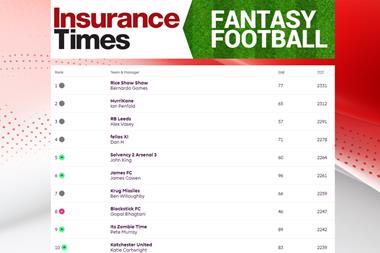The current hardening of the reinsurance market is different from previous upturns
The reinsurance market is now in a hard phase worldwide. The Japanese reinsurance market recently firmed and turned, following other international markets. At the 1 April renewals, Japanese wind prices were up for the first time in three years, firming in a range of 2.5%-12.5%, according to recent figures from broker Guy Carpenter. Furthermore, the oversubscription rate reduced from 114% to 109%, a sign of market hardening. Japanese earthquake prices were also up for the first time in three years: pro rata reinsurance was up by 2.5%, and excess of loss was from between 2.5% and 7.5% higher.
An important reason for the firming of rates in Japan is currency effects. The yen is very strong relative to the dollar and sterling. Providers of reinsurance capacity from weaker currencies have been restricted in writing business. Reinsurers in Lloyd’s and the London market have seen their capacity to write Japanese business restricted because of the weakness in the pound sterling.
Although Japanese rates are firming, they are not doing so as fast as US rates. US property and casualty reinsurance rates were up 10-14% year on year on 1 April, according to Guy Carpenter. The US firming began at the 1 January, 2009 renewals, when the average reinsurance rate increase was 11%.
Behind the worldwide hardening reinsurance market is weakness in reinsurer balance sheets. Last year, many reinsurers saw their shareholders’ equity contract sharply, hit by investment losses. Most reinsurers lost money last year. Guy Carpenter’s Global Reinsurance composite, a selection of large reinsurance companies from around the world, saw an aggregate loss in 2008 compared with a profit in 2007. Return on equity across the composite in 2008 was minus 6.2%.
It is worth noting that reinsurance underwriting remained profitable last year, even
though underwriting profits were very sharply down. In the early part of 2008 there were many large individual losses, then in the second half of the year the giant Hurricane Ike caused much higher losses than originally projected. But overall, losses on the investment side are the main reason for balance sheet weakness among reinsurers.
Unusually, despite the hard reinsurance market, there is little sign of new capital flowing into the sector. Market turns have historically been accompanied by an influx of new capital chasing the higher rates. Part of the reason for the lack of it this time, is that reinsurers’ investment losses remain for the present mostly unrealised losses. Reinsurers have not been forced into a fire sale of underperforming assets. Their cash flow remains strong. In consequence, the reinsurance market hardening, though significant, is not dramatic or extreme. If negative operating cash flow were to occur among reinsurers, then reinsurance prices could turn up very dramatically indeed.
Key points
The reinsurance market is hardening worldwide
The main reason for this is weakness in reinsurer balance sheets
Reinsurers' cash flow remains strong, which has moderated the upturn





































